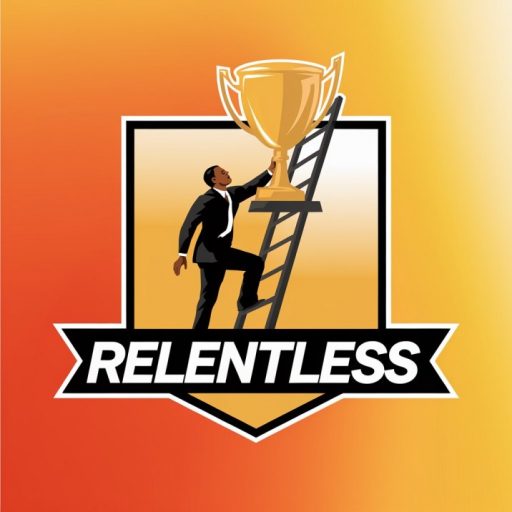Day 1 – Sunrise start
One hundred miles, 200 runners, 300 volunteers, 5 alpine passes and more than 23,000 feet of elevation gain, all in 37 hours.
Runners took off toward the shoulder of Mt. Antero at 6 a.m. on Friday, July 19, as the sun came over Midland Hill, cowbells ringing and cheers echoing. Crowds of supporters and volunteers dispersed soon after to head to aid stations and await the runners.
The High Lonesome 100, run by co-owners Caleb Efta and Kelsey Banaszynski, was founded in 2016.
“This is the best time of the race,” said Banaszynski. “There’s a couple of hours where everything feels good, and probably in five hours or so we’ll know if something’s off.”
“Our team is so solid,” Efta said. “All the work is done, and it’s just them doing what they’re good at.”
Volunteers split into shifts, and this year’s crowd, 300 strong, is a new record for the race.
“People flew in from Canada just to volunteer for this run or came from New Zealand,” Efta said. “It’s pretty cool how many people are coming together to help us put it on. … This entire thing is done by volunteers, and if it wasn’t for them, we wouldn’t have anything.”
Preparations for Race Day begin months in advance, between permitting, planning and entrant lotteries. Course marking began the Tuesday before the race and continues until the sweepers leave to pick up flags after the racers depart.
The race is capped at 200, and only one spot was left open as the starting gun fired Friday morning. Though even one empty slot can be a disappointment, it’s sometimes inevitable.
“This is the third or fourth year we’ve had spots open, but two of those years were COVID,” Efta said, “so Mulligans.”
With runners on the course, Efta and Banaszynski moved on to make gear deliveries and ensure aid stations are set. The next big hurdle, Efta said, is shuttling crews to Cottonwood at the 30-mile mark. Colorado Off Road Enterprise, based in BV under founder Marus Trusty, supports the shuttle endeavor as a fundraiser.
“Then we’re cleaning up,” Efta said. “We try to clean up as close behind the last runners as we can just so we’re not impeding other people’s experiences and leaving a bunch of stuff out there.”
The director team, Banaszynski added, circles the course the whole time. The ten-person team coordinates responsibilities to ensure the event runs smoothly and supplies are stocked.
“The front runner will be finishing right around the time the last runner is leaving the halfway point,” Efta said. “The spread of the course gets pretty significant. We’ve got aid stations that are operating 24 hours straight from the time they set up to tear down. … We’ve got 13 aid stations this year.”
Efta and Banaszynski, who are local, feel the course location makes for a special experience for runners.
“The first day, runners are taking these huge climbs and they’re up high, they’re on the Continental Divide, they’re in these beautiful alpine meadows and really just running underneath the Fourteeners,” Banaszynski said. “Right out of they’re going over the shoulder of Mt. Antero. It’s the biggest climb of the race, and the views are incredible.
“Then on the second day, or if you’re really fast it’s still your first day, they make it down to the valley floor and they’re running the Colorado Trail,” she continued. “The two halves of the race are really so different and require such different skills, and they’re visually so different, as well.”
“It’s the spine of the continent,” Efta said. “It’s the densest pack of 14er peaks outside of anywhere in Colorado, and it’s the densest in Colorado. It’s the best spot in the world. … Most of them come in (to Buena Vista) on Hwy. 285 and they look at Mt. Princeton and they get so nervous because you see the scale of it. They’re literally going to run right below that peak.
Running any ultra takes grit, humility, stubbornness and mental preparation.
“These mountains will break you,” Efta said. “And in 100 miles, it’s never if things go wrong by when they go wrong and how you prepare for that. So you train as hard as you can.”
Many runners will do 50-, 60- or 100-mile races to prepare for High Lonesome. Banaszynski and Efta tend to run around 1000 miles a year when training for ultras, and other runners could do as many as 3000 or even 6000.
“But you come in on Race Day, the work’s done, you just have to run. That’s the easy part,” he said. “So they’re going to suffer. The weather’s going to come in. Some people are going to not make it (finish the race). … There’s this really fine line they have to find. Then as soon as the wheels start coming off, it’s just triage, solving all these different things.”
Stormy weather, blisters, heat, cramps altitude sickness, headaches, falls and more await runners, which Efta says “shows how resilient they can be” when they tackle the 100-mile challenge.
“It takes a lot of stubbornness, not giving up,” Banaszynski said. “It’s remembering that pain is part of the journey, and all of the training you do is getting you mentally prepared for that. The physical part of it is almost less than the mental aspect of getting your mind ready to push through and problem-solve.
“When you’re physically exhausted, mentally being able to figure out how to just get the next step taken and make it to the next aid station becomes increasingly hard,” she said. “That’s what the training is all about. … Whatever happens, ou can dig deep and remember, push through at other times, whatever everyone’s driving force is. It’s about bringing that to the surface and being ready to use it.”
“The really fast folks, theyre just flying,” Efta said. “The people in the back of the pack are just grinding. So they have very different experiences.”
Day 2 – Golden hours
The evening of Saturday, from 5-7 p.m., saw the bulk of the race’s finishers come in. As they came down the chute, Efta presented each runner with a High Lonesome 100 belt buckle, a hug and his heartfelt congratulations on their accomplishment. Families and friends welcomed their runners home, while some finishers traded hiking poles for kiddos to cross the finish line.
This year, the race also saw multiple course records blown away to “set a hell of a new one,” Efta said.
“Mckendree Hickory did something that’s never been done before,” he said. “She ran a 22:19:22, which is astounding. Not to be outdone, Laura Hansen ran a 23:06, which is also about 40 minutes faster than the course record. Sarah Ostaszewski … did 24:56:47, rounding out our women’s podium.
“On the men’s course, we didn’t get a course record, but we got the second fastest time in history,” Efta continued. “Christopher Hammes at 20:16:25 got first place this year. He and Alex (Nichols) had one of the coolest moments I’ve seen in a while, and I got to watch Chris and Alex about 60 seconds apart on Shavano in the middle of the night. It was so cool to watch their race develop. Alex came in at 21:06:08 for second place. And then third place … Elan Leiberat 21:45:39.
“You are all responsible for not letting me sleep,” Efta said. “Thank you for putting out such a great effort for us.”
Efta also highlighted those who didn’t finish the race.
“Not everything goes to plan, even if you do everything you can,” he said. “We don’t think whether or not you cross the finish line determines whether this was a success or not. There is a huge a mount of work that goes into getting here in the first place, and we don’t think we shouldn’t celebrate that.”
Each finisher took home a bottle of Laws whiskey, packing in for a “family photo” before camps were packed and troops headed home for well-earned rest.
In putting on the race, Freestone Endurance raises dollars for the Colorado Fourteeners Initiative, Continental Divide Trail Coalition, the Colorado Trail and the Trail Mix Fund, which works to bring more diversity to trail running. This year, they raised just under $20,000, bringing their running total to around $110k.
Runners can either do eight hours of trail work or pay an opt-out fee to cover that work.
“We did like 500 hours of physical trail work in this district,” Efta said. “It’s not just about using the trails. I’ts about giving back to them, too.”
Efta and Banaszynski also expressed gratitude for their land partners, including Chaffee County, the U.S. Forest Service, state land staff and city staff as well as their sponsors.
“It’s just a real community effort, so we’re really grateful that we live here and that the community loves this event just as much as we do,” Banaszynski said.
“It’s pretty special to be able to put on a race on two of the most iconic trails in North America,” Efta said, “and for that to also be our home is even more special.”





